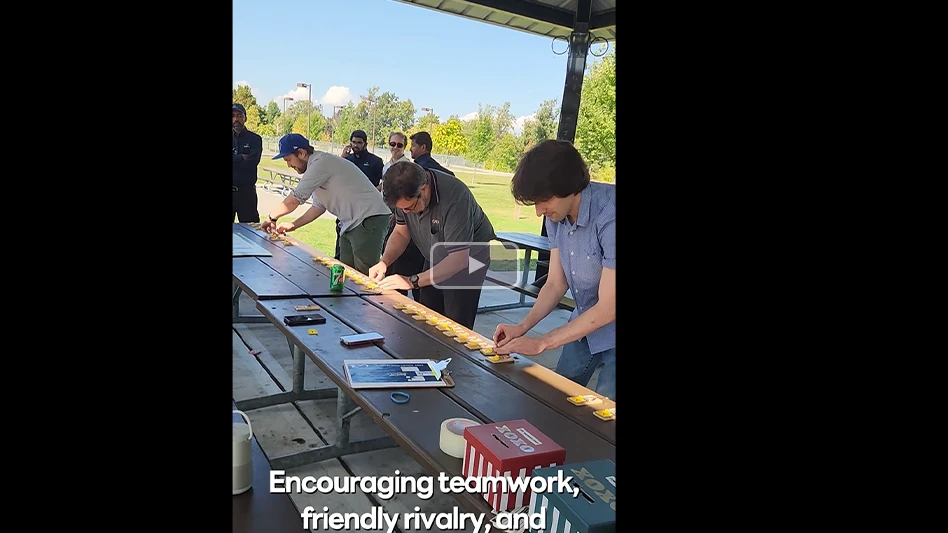Regardless of the ant control products you use — whether they are baits, granules or liquids — you can achieve effective control if you understand basic ant behavior and are able to identify the various species. The first step is to properly identify the ant pest. Different ants have different behavior patterns that will directly impact your ant control efforts.
Ants have six legs, antennae and a three-segmented body (head, abdomen and a narrow thorax) that separate them. Although most ants are black or brown, you’ll sometimes find them with red and yellow shades. Ant species range in size from the tiny 1⁄16-inch Pharaoh ant to the ¾-inch carpenter ant.
Ants are social insects living in colonies usually found in the ground near the foundation of a building or under concrete slabs. They also can be found in structural wood, in crawlspaces, in the yard or in trees.
There are three castes: queens, males and workers. Queens and males reproduce, but the workers are sterile, wingless females. Winged reproductives swarm and leave their nests between March and July, in order to create new colonies. Males die after mating; queens, on the other hand, can live more than 20 years and spend the rest of their lives laying eggs to populate the colony.
A single fertilized queen that lays eggs and protects them as they develop into worker ants starts new colonies. Taking care of the brood is assumed by workers, which may move them to different locations when moisture and temperature change significantly in the nest.
Swarmers are sometimes confused with termites, which also swarm at the same time of the year. You can tell them apart by noting their wings. Ants have longer front wings than hind wings. The front and hind wings of termites are about the same size and nearly twice as long as their body. Ants also have a pinched waist and elbowed antennae.
Not all ants, however, form their colonies by swarming. Members of a mature colony of odorous house ants and Pharaoh ants, for example, may leave the immediate area to establish a new nest. That’s called budding. When ant colonies expand this way, they usually locate relatively close to the parent nest. Budding colonies also have multiple queens that generate significant growth in ant populations.
When workers forage for food, they often enter buildings and become a nuisance. They may even contaminate food. While foraging, the workers communicate their findings with other workers. They do so by leaving a pheromone trail as they head back to the nest. The pheromones remain for long periods of time and help other ants find the food. They also communicate by trophallaxis, the exchange of oral and anal liquid.
As a group, ants feed on a wide variety of sweets, greasy materials, starchy substances, wood, and all types of plant and animal materials. Don’t underestimate the importance of good sanitation to eliminate food sources, although that may not entirely control an infestation. The various ant species include:
- Acrobat ant — They are yellow-brown to black with a shiny body and a darker heart-shaped abdomen. They are 1⁄8- to ¼-inch long and have this moniker because of the unusual behavior they exhibit when disturbed. They tend to bend their abdomen up over their body. Unlike carpenter ants, acrobat ants do not pose a structural threat to buildings. They produce a foul-smelling odor when threatened and are quick to bite.
- Argentine ant — With color ranging from light to dark brown, they are 1⁄10-inch long, very invasive and live in large colonies. Because of their numbers they can take over the nests of native ant species.
- Carpenter ant — Our country’s largest-sized ant species, they have a dull black color and are ¼- to ¾-inch long. They were named for their excavating behavior but they don’t ingest wood. Instead they tunnel and create galleries for nesting. Large colonies can consist of tens of thousands of ants and they can cause structural damage.
- Citronella ant — These ants are yellow to red-brown in color and 3⁄8-inch long. They are named for the odor they emit in defense and when crushed. They are seldom seen because they live underground but may swarm indoors in late winter to early spring when they often are confused with termites.
- Odorous house ant — Sometimes known as "sweet ants," they are dark brown and 1⁄8- to 1⁄16-inch long. They are named for the rotten coconut odor they emit as a defense and when crushed, and they leave long trails leading from doors or windows to food areas. They forage in large numbers and may swarm kitchen counters and floors as they search for food and liquids. Their size allows them to easily reach and contaminate food.
- Pavement ant — These ants are brown to black with pale brown legs and antennae, and are 1⁄8-inch long. They can swarm over sidewalks and patios in the spring when they are most active. Although basically harmless, pavement ants nest in the ground under stones and building slabs and large numbers may swarm in springtime into buildings built on concrete slabs. Their colonies typically are small with several queens but their swarming behavior can make them a nuisance. Their nests under concrete slabs can make extermination difficult.
- Pharaoh ant — These ants are 1⁄16-inch long and their translucent golden yellow to red color makes them tough to spot. They forage along linked trails and are sensitive to cold. They usually are found in kitchen wall voids, under sinks, in furniture, inside cabinets, light fixtures and appliances. They can be harmful because they can carry more than 12 pathogens and bacteria. They can contaminate food and are a problem in restaurants, groceries, hotels, office cafeterias and residences. They can spread infection in hospitals and nursing homes by crawling into wounds.
- Fire ant — Fire ants differ from other ants because of their copper brown head and body with a darker abdomen. Worker ants are blackish to reddish, and their size varies from 1⁄8- to ¼-inch. Fire ants of these different sizes can all exist in the same nest. Their colonies produce large mounds in open areas, and feed mostly on young plants, seeds and sometimes crickets. Fire ants often attack small animals and can kill them. Their toxic sting is painful for humans, causing a fire-like feeling and can be deadly to sensitive individuals. Colonies are formed by small groups of queens or single queens. Even if only one queen survives, within a month or so the colony can expand to thousands of individuals. Some colonies may have multiple queens per nest.
The author is retired technical director of Gregory Pest Solutions in Greenville, S.C. He’s a board certified entomologist and currently works for Gregory as a consultant. He’s a member of the Copesan Technical Committee and can be reached at
dsexton@giemedia.com.
Founded in 1958, Copesan is an alliance of premier pest management companies with locations throughout North America. To learn more visit www.copesan.com.

Explore the July 2010 Issue
Check out more from this issue and find your next story to read.
Latest from Pest Control Technology
- Termite Control Tools and Equipment for PMPs
- Choe Reviews Drywood Termite Geographical Hotspots, Latest Research Findings
- Mosquito Squad Announces Rebranding to Mosquito Squad Plus
- Pest Control Equipment: If it’s Critical, Back it Up!
- In Memoriam: Marybeth Wonson
- In Memoriam: Layton Word
- Mitchell Boston's Involvement as Local Councilman Sparks Growth in Pest Control Business
- Grizz Pest Management Owners Support Wildlife Conservation with Brookfield Zoo in Chicago





